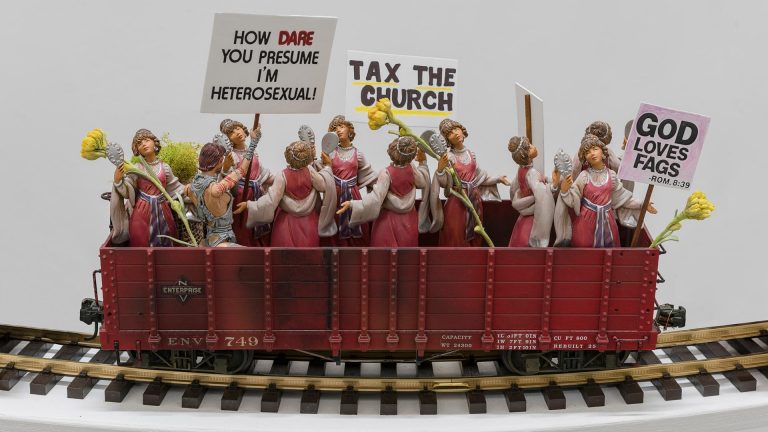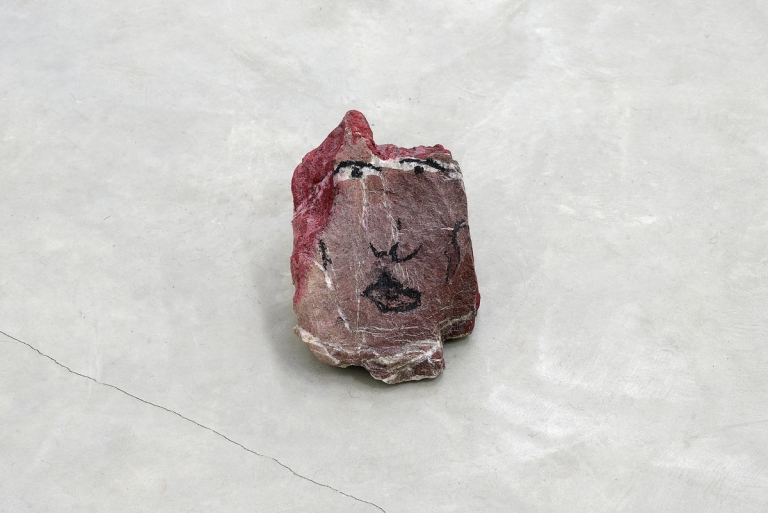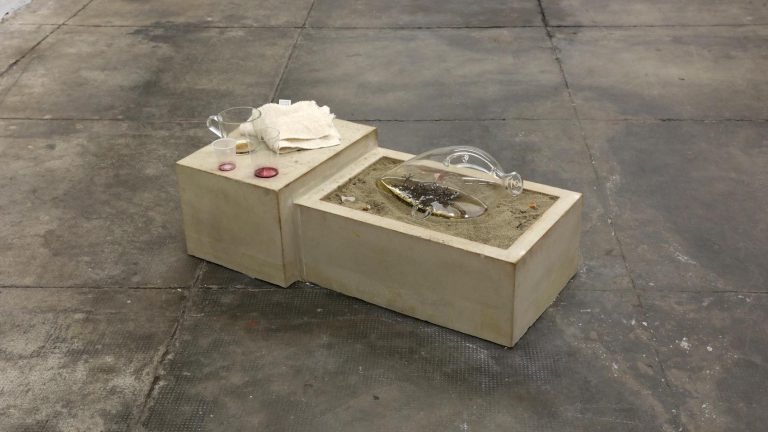Artist: Namsal Siedlecki
Exhibition title: White paper
Curated by: Saverio Verini
Venue: Smart, Rome, Italy
Date: April 19 – July 20, 2018
Photography: all images copyright and courtesy of the artist and Smart, Rome
This title seems somewhat ambiguous, since the expression White Paper can be interpreted as a reference to a blank sheet of paper on which one can start to draw or write, to an authoritative report or guide for resolving a problem, or to the “carte blanche” (in Italian “carta bianca”) that denotes a complete freedom to act as one wishes. In fact, the title principally refers to the original “manifesto” of cryptocurrencies and the Blockchain, published in 2008 by Satoshi Nakamoto, the Bitcoin’s inventor.
Namsal Siedlecki has based his reflections on one of the key elements underlying the affirmation of cryptocurrencies, the so-called miner, a computerized calculator that is used to “extract” the Bitcoin. At first sight these strange devices are basically small oblong boxes made of plastic and metal with many protruding cables and wires. Most people are still unfamiliar with these enigmatic objects, but perhaps we will soon become better acquainted with them. The artist has incorporated some of them into a set of unique sculptures: hybrid objects which combine natural elements (such as stone, marble and wood) with artificial elements (the Bitcoin miners). These contrasting functions and forms establish a weird kind of formal balance, involving a dissonant agreement and a strident composure. At the root of these contrasts is an aspect of Siedlecki’s work that strikes me the most: the way in which – according to a ready-made approach – the artist uses an existing object, but one that is anything but banal or everyday: something real that is functional, but that many people might not immediately recognize.
This is why these four artworks appear to be alien presences, which produce an effect that is not based on our shared or collective imagination, so much as on their inherent dissimilarity. The artist gives ambiguous roles to the natural elements of the sculptures: the stone blocks and the trunk of an olive tree could simply be seen as the bases of the Bitcoin miners and yet, considered together with these devices, they create a form that countermines their “tasks” of acting as supports or as the sculptures themselves. Siedlecki’s works also embody the contrast between the concrete qualities of their “bases” and the virtual qualities that the fully operational Bitcoin miners are generating in the form of cryptocurrency. Temporality and materiality, apparently at the antipodes, can thus unite without fully merging with each other, like two different species of animals that are trying to mate.
The sense of vitality that derives from all this is also enhanced by the ongoing activity of the Bitcoin miners. Connected to power sockets and to a Wi-Fi network, these devices are incessantly “mining” and producing cryptocurrencies. Their constantly flashing lights and the noise of their cooling fans are the tangible indications of a paradoxical automatic dynamism. In fact, these sculptures incorporate a concrete activity of wealth production, which is something that makes their own value rather confused. After all how should we consider an artwork that is actually producing money by itself? What price-tag should we give to it? I do not feel it is possible to give a simple answer, but I can see how Siedlecki has posed such questions in an incisive and formally effective way, creating the paradox of an artwork that continually generates capital and that – like a prodigal son – seems to be escaping from the limitations imposed by the artist who made it.
The animal world could hardly be absent, as this is a theme that Siedlecki has often been drawn to in realizing his works, and in fact the artist has also created a set of canvases made of parchment, a material produced from goatskin that – through a meticulous task of processing in accordance with ancient techniques – takes on the appearance of a rigid white surface, similar to a living skin. The use of this material reflects Siedlecki’s interest in the passages of state that objects can undergo, and their possibilities for changing shape and form, but also here he focusses on the concept of value and on the way parchment was historically related to economic exchanges. In fact the ancient registers upon which expenses, transactions and financial operations were once written down were made of parchment. By turning it into set of canvases, Siedlecki highlights the formal qualities and material properties of what is a basically monochrome material. The apparently minimalist aspect of these works is subtly negated by ghostly marks and stains on their surfaces, and each canvas thus bears the traces of the corporeal existence of the living animal, almost as if it were a funeral shroud.
We wish to thank the company BITMINER FACTORY for the support it has provided for the realization of the exhibition.
Namsal Siedlecki, White paper, 2018, exhibition view, Smart, Rome
Namsal Siedlecki, White paper, 2018, exhibition view, Smart, Rome
Namsal Siedlecki, Mine, 2018, Marble, Antminer D3, RJ-45 cable, electric cable, Variable dimensions
Namsal Siedlecki, Mine, 2018, Marble, Antminer D3, RJ-45 cable, electric cable, Variable dimensions
Namsal Siedlecki, White paper, 2018, exhibition view, Smart, Rome
Namsal Siedlecki, White paper, 2018, exhibition view, Smart, Rome
Namsal Siedlecki, White paper, 2018, exhibition view, Smart, Rome
Namsal Siedlecki, Mine, 2018, Travertine, Antminer D3, RJ-45 cable, electric cable, Variable dimensions
Namsal Siedlecki, White paper, 2018, exhibition view, Smart, Rome
Namsal Siedlecki, Mine, 2018, Olive wood, Antminer D3, RJ-45 cable, electric cable, Variable dimensions
Namsal Siedlecki, Mine, 2018, Olive wood, Antminer D3, RJ-45 cable, electric cable, Variable dimensions
Namsal Siedlecki, Vellum, 2018, Parchment, 79 x 90 cm
Namsal Siedlecki, Vellum, 2018, Parchment, 65 x 103 cm
Namsal Siedlecki, Vellum, 2018, Parchment, 61 x 87 cm
Namsal Siedlecki, Vellum, 2018, Parchment, 63 x 91 cm
Namsal Siedlecki, Vellum, 2018, Parchment, 79 x 90 cm (detail)






















